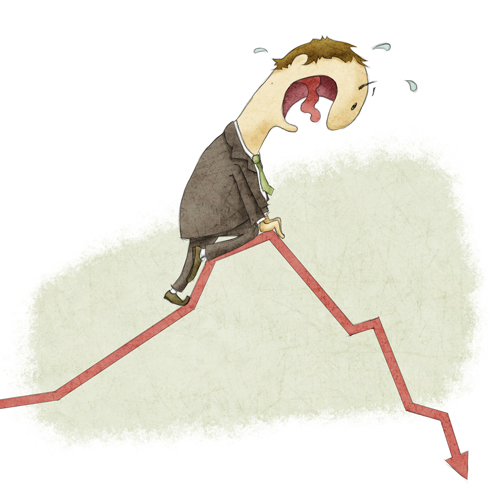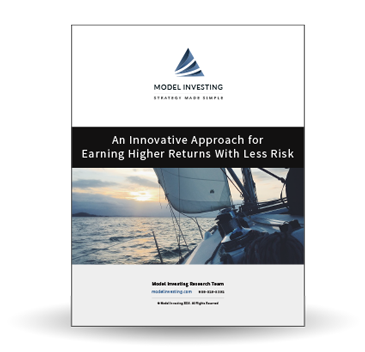 We all have a natural inclination to want the stock market to move higher. This is because the vast majority of investors are always positioned to benefit from higher prices, and higher prices make our account balances look better.
We all have a natural inclination to want the stock market to move higher. This is because the vast majority of investors are always positioned to benefit from higher prices, and higher prices make our account balances look better.
But counterintuitively, for the vast majority of investors, lower market prices will actually lead to higher account balances down the road. There are of course some exceptions, but more than likely you’re about to find out why you’ve been spending your whole life hoping for the wrong outcome in the stock market.
In order to explain this concept thoroughly, we need to break investors into four different groups: those that are in the accumulation phase vs. the distribution phase, and those who are using a strategic asset allocation (buy-and-hold) approach vs. those who are using the more modern tactical asset allocation (which we use here at Model Investing).
Accumulation Phase vs. Distribution Phase
There are two distinct phases that each of us go through as investors. From birth until retirement, we are in the accumulation phase of our lives. Our goal during this phase is to accumulate as many assets as possible, which we will then use to fund our living expenses once we stop working.
After we reach retirement, we enter the distribution phase of our lives. At this point, we hope to have amassed enough assets so as to be able to liquidate those assets slowly over time, thereby providing enough income to support us as we age.
The key distinction between these two phases is this: During the accumulation phase, we are net buyers of financial assets (such as stocks), while during the distribution phase, we are net sellers. As you can probably guess, this leads to two very different outlooks in terms of how we want the market to behave.
Specifically, when we’re net buyers (accumulation phase), we want prices to be as low as possible … buy low, sell high, right? It’s only when when we retire and switch to the distribution phase of our lives that we want prices to be as high as possible.
So right off the bat we can say this: If you are retired (in the distribution phase), and are continually selling the assets you’ve accumulated, then this article really doesn’t apply to you. You should continue to hope that the market climbs so that you receive the best possible prices as you slowly liquidate assets.
There are a couple of exceptions to this, which we’ll discuss at the end, but generally speaking those in the distribution phase of life will benefit from higher market prices, while those in the accumulation phase will benefit from lower prices.
Now let’s talk about the other differentiator – which investment philosophy you follow.
Strategic Asset Allocation vs. Tactical Asset Allocation
We’ve covered the differences between these two investment approaches in prior articles, but here’s a brief summary to make sure you’re up to speed.
Strategic Asset Allocation (also known as buy-and-hold) is the philosophy of always staying invested in the market no matter what. Allocation decisions are based solely on age, with no regard for factors such as the state of the economy and financial markets, or the expected performance of various asset classes.
Tactical Asset Allocation, on the other hand, ignores age as an investment factor and instead directs investments towards areas of the market that are expected to outperform. As the business cycle ebbs and flows, allocations are adjusted to avoid major drawdowns associated with economic recessions and bear markets (such as the financial crisis and dot-com collapse).
The mechanisms by which lower market prices work to your benefit depend on which of these investment approaches you use.
Strategic Asset Allocation
If you never adjust your allocations to take advantage of changes in the business cycle, then you’ll really never be able to “buy low and sell high.” Instead, your modus operandi is simply to buy shares at whatever the prevailing price is, and continually add them to your portfolio.
For example, let’s say you invest through a 401(k) or the Thrift Savings plan, and you’re invested in one of those dreaded target-date or lifecycle funds (see here for why we recommend avoiding these). Each pay period, as money is withdrawn from your paycheck, it’s used to buy additional shares.
Now, let me ask you this: Would you rather the prices of those shares you’re purchasing be high or low as you’re accumulating them?
Hopefully you said low, otherwise we have a lot of work to do … And if you did say low, then why on earth are you constantly hoping the market goes UP? Sure, the market going up will make your account balance look better, but you’re not selling any shares – you’re buying them.
Anyone who is in the accumulation stage of life, following a buy-and-hold approach to investing, will benefit much more when the market is lower. This is because each dollar that you contribute to your retirement accounts can purchase a greater number of shares. In the long-run, you’ll end up with a much bigger overall portfolio (more shares of more stocks) if most of your accumulation can be done while prices are suppressed.
It’s only way down the road when you become a net seller of assets that you want prices to be as high as possible … make sense?
Tactical Asset Allocation
Those who have taken the time to understand the fundamental changes that have occurred within our economy and across financial markets understand that buy-and-hold is no longer an ideal way to invest. This is because our economy moves in cycles. Holding stocks (for example) during an economic recession, will lead to massive losses as it did back in ’07-’08 and ’00-’02.
As a result, these investors are much more objective in how they invest. Whereas someone who is following a buy-and-hold approach will allow their stock portfolio to fall in value along with the market during economic recessions, an investor using tactical asset allocation will shift that money to bonds or cash so as to avoid the drawdown.
What this does is allow these investors to sell shares when prices are high, and then repurchase those same shares (or a similar basket of stocks) at much lower prices near the end of each subsequent recession.
Now think about the implications of this. If we never experienced big declines in the stock market, this opportunity wouldn’t exist. In fact, if we invert the situation, we can say that the more times the economy cycles from expansion to contraction (and consequently the stock market rises and falls), the MORE opportunity is available to these types of investors.
In fact, each recession that we go through allows these types of investors to liquidate stocks at elevated levels, and then repurchase them at much cheaper prices. The more times an investor can do this, the faster their retirement account will compound.
It’s also important to note that the same benefit afforded to buy-and-hold investors (accumulating stocks for cheaper when the market is lower) also applies to those using Tactical Asset Allocation. But those following TAA also enjoy an additional, and much more substantial benefit.
Final Thoughts
No matter who you are, or what type of investment approach you follow, we all have this seemingly innate desire for the stock market to move higher. But if we look at the situation pragmatically, we realize that lower market prices are actually favorable for the vast majority of us.
It’s only those folks who are in retirement (the distribution phase) and currently liquidating assets who benefit from higher market prices.
And as mentioned earlier, there are even some caveats to this. If you’re in retirement, but not actually liquidating assets because you’re living off a separate stream of income, then you’re effectively still in the accumulation phase – you benefit from being able to acquire shares at lower prices.
At the same time, someone who is in the distribution phase but using TAA will actually be able to take advantage of declining market prices because of the tactical nature of their portfolio. Rather than continuing to liquidate assets as the stock market falls, this type of investor would sell their entire stock portfolio as economic conditions begin to deteriorate, and move that money into bonds or cash for safety.
Then to fund living expenses, they would be liquidating bond or cash positions, which are much more likely to remain stable or rise in value as stock prices fall. Once the economic cycle turns up again, they would move their portfolio back into stocks, enabling them to take advantage of rising stock prices during the next expansion.
In sum, unless you’re currently in the distribution phase deriving your living expenses from selling shares of stocks, there’s a good chance you stand to benefit from lower market prices. That’s why as the title of this article states, you should look forward to market declines.


